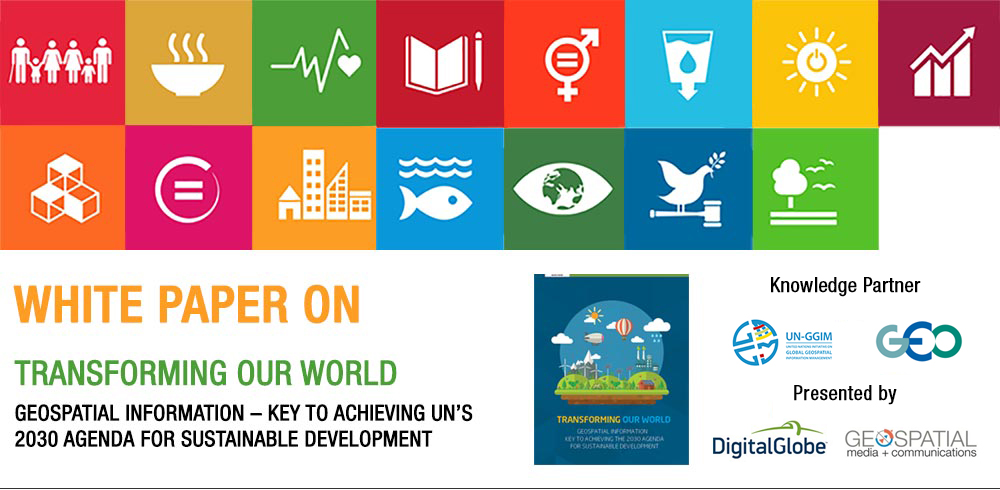
The United Nations announced the 2030 Agenda for Sustainable Development in September 2015 to reach the ‘furthest behind first’. The 17 Sustainable Development Goals and the 169 associated targets promise to achieve sustainable development in its three dimensions – economic, social and environmental – in a balanced way.
The United Nations acknowledges the significance and the need for leveraging a wide range of data, including earth observation and geospatial data for measuring and monitoring the progress of the goals and targets set by the Agenda. The Agenda will conduct regular and inclusive reviews of progress achieved and it encourages nations to identify and create most suitable mechanisms to build on existing follow-up and review mechanisms.
Geospatial Media and Communications along with DigitalGlobe tried to assess how geospatial information is key to achieve UN’s 2030 agenda for sustainable development.
The Highlights of White Paper:
- The data divide between developed and least developed nations and the need to bridge the divide to achieve Sustainable Development Goals (SDGs)
- Significance and application of earth observation and geospatial data for measuring and monitoring SDG progress
- Need for quality geospatial data in time and space for achieving SDGs
- Role of national mapping and national geospatial information agencies in integrating geospatial information into development agenda
- Recommendations for streamlining and for effective use of geospatial information for achieving SDGs
- How geospatial community can push the ‘geospatial value proposition’ envelope to governments and decision makers